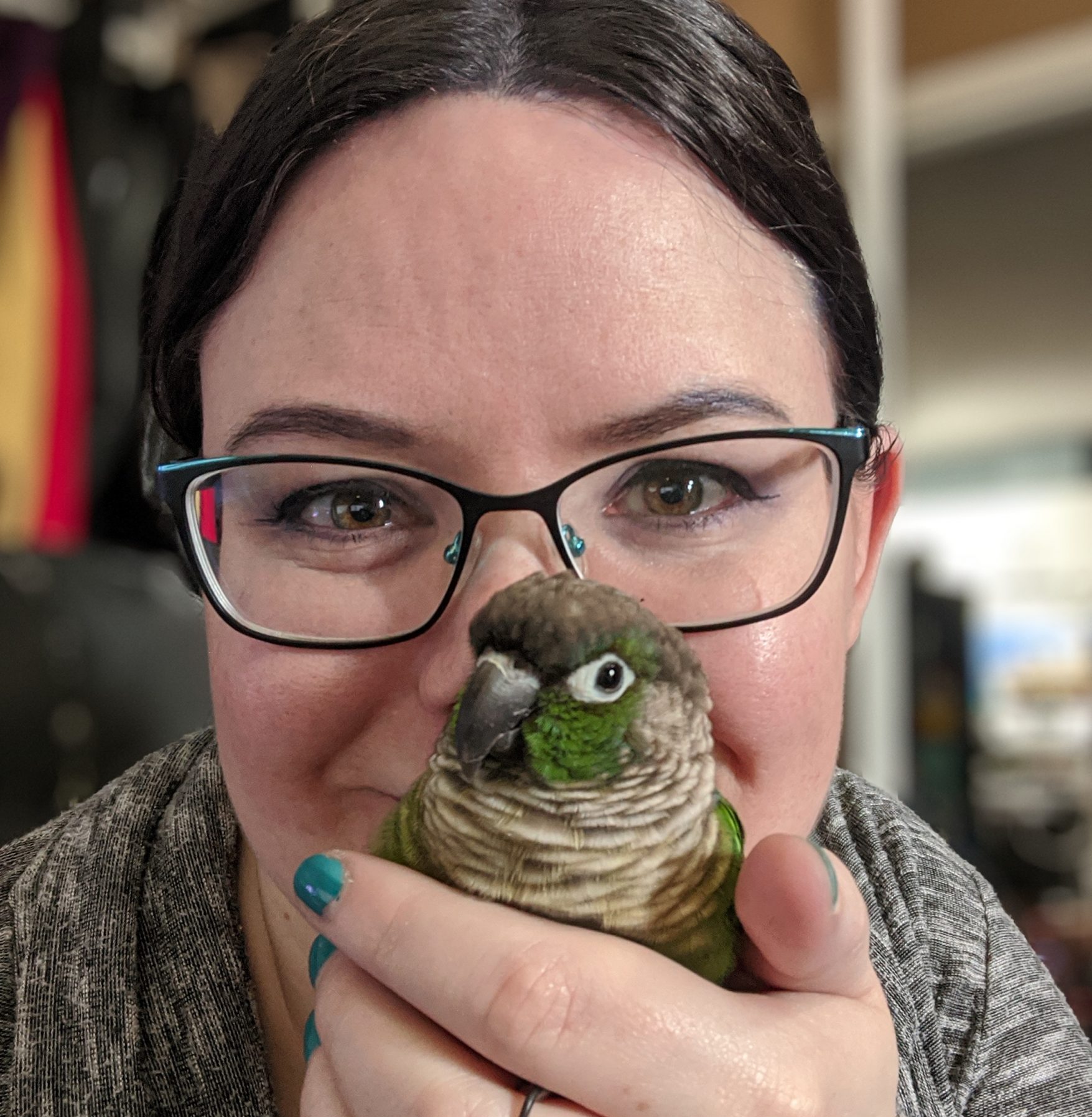Publications
The following publications highlight years of research by myself and an array of collaborators.
Topics range from Black-capped Chickadees to Humans focusing primarily on production and perception as it pertains to communication.
Filter by type:
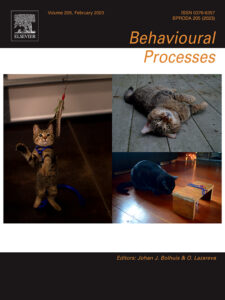
Black-capped chickadees (Poecile atricapillus) discriminate between naturally-ordered and scramble-ordered chick-a-dee calls and individual preference is related to rate of learning
Abstract
Though many forms of animal communication are not reliant on the order in which components of signals are combined to be effective, there is evidence that order does matter for some communication systems. In the light of differential responding to calls of varying note-order observed in black-capped chickadees in the field, we set out to determine whether chickadees recognize syntactically-ordered and incorrectly-ordered chick-a-dee calls as separate and distinct conceptual categories using both an auditory preference task and go/no-go operant conditioning paradigm. Results show that chickadees spent more time on the perch that did not produce sound (i.e., silent perch) than on either of the acoustic perches (i.e., natural and scrambled order chick-a-dee call playback) and visited the perch associated with naturally-ordered calls more often than the perch associated with scrambled-order calls. Birds in both the True natural- and scrambled-order call groups continued to respond according to the contingencies that they learned in Discrimination training, indicating that black-capped chickadees are capable of perceiving and acting upon the categories of natural- versus scrambled-ordered calls.

Discrimination of black-capped chickadee (𝘗𝘰𝘦𝘤𝘪𝘭𝘦 𝘢𝘵𝘳𝘪𝘤𝘢𝘱𝘪𝘭𝘭𝘶𝘴) 𝘤𝘩𝘪𝘤𝘬-𝘢-𝘥𝘦𝘦 calls across seasons
Abstract
While black-capped chickadees (Poecile atricapillus) primarily produce fee-bee songs in spring, they produce chick-a-dee calls year-round with call production peaking in the fall. This call serves multiple functions, including food location, flock communication, and predator alarm. As seasons change, the meaning of the call may also change. For instance, flock communication could be more important in the fall than in the spring, and food type and availability change according to season. To determine if the chick-a-dee call varies acoustically across seasons in a predictable manner, we conducted an operant go/no-go discrimination task that examined black-capped chickadees’ ability to categorize calls produced in two different seasons: fall and spring. We found that birds trained to respond to vocalizations produced in either fall or spring learned to discriminate at the same rate as birds trained to respond to pseudorandomized stimuli, suggesting that none of the groups demonstrated category learning, relying instead on rote memorization. These results suggest that while chickadees can be trained to discriminate between chick-a-dee calls produced in different seasons, they do not discriminate these calls or perceive these calls as being members of natural, preexisting, perceptual categories, based on an underlying perceptual similarity.

Acoustic discrimination of predators by black-capped chickadees
Abstract
Smaller owls and hawks are high-threat predators to small songbirds, like chickadees, in comparison to larger avian predators due to smaller raptors’ agility (Templeton et al. in Proc Natl Acad Sci 104:5479–5482, 2005). The current literature focuses only on high- and low-threat predators. We propose that there may be a continuum in threat perception. In the current study, we conducted an operant go/no-go experiment investigating black-capped chickadees’ acoustic discrimination of predator threat. After obtaining eight hawk and eight owl species’ calls, we assigned each species as: (1) large, low-threat, (2) mid-sized, unknown-threat and (3) small-, high-threat predators, according to wingspan and body size. Black-capped chickadees were either trained to respond (‘go’) to high-threat predator calls or respond to low-threat predator calls. When either low-threat predator calls were not reinforced or high-threat predator calls were not reinforced the birds were to withhold responding (‘no-go’) to those stimuli. We then tested transfer of training with additional small and large predator calls, as well as with the calls of several mid-sized predators. We confirmed that chickadees can discriminate between high- and low-threat predator calls. We further investigated how chickadees categorize mid-sized species’ calls by assessing transfer of training to previously non-differentially reinforced (i.e., pretraining) calls. Specifically, transfer test results suggest that mid-sized broad-winged hawks were perceived to be of high threat whereas mid-sized short-eared owls were perceived to be of low threat. However, mid-sized Cooper’s hawks and northern hawk owls were not significantly differentially responded to, suggesting that they are of medium threat which supports the notion that perception of threat is along a continuum rather than distinct categories of high or low threat.

ZENK expression in the auditory pathway of black-capped chickadees (𝘗𝘰𝘦𝘤𝘪𝘭𝘦 𝘢𝘵𝘳𝘪𝘤𝘢𝘱𝘪𝘭𝘭𝘶𝘴) as a function of D note number and duty cycle of 𝘤𝘩𝘪𝘤𝘬-𝘢-𝘥𝘦𝘦 calls
Abstract
Black-capped chickadees (Poecile atricapillus) use their namesake chick-a-dee call for multiple functions, altering the features of the call depending on context. For example, duty cycle (the proportion of time filled by vocalizations) and fine structure traits (e.g., number of D notes) can encode contextual factors, such as predator size and food quality. Wilson and Mennill (2011) found that chickadees show stronger behavioral responses to playback of chick-a-dee calls with higher duty cycles, but not to the number of D notes. That is, independent of the number of D notes in a call, but dependent on the overall proportion of time filled with vocalization, birds responded more to higher duty cycle playback compared to lower duty cycle playback. Here we presented chickadees with chick-a-dee calls that contained either two D (referred to hereafter as 2 D) notes with a low duty cycle, 2 D notes with a high duty cycle, 10 D notes with a high duty cycle, or 2 D notes with a high duty cycle but played in reverse (a non-signaling control). We then measured ZENK expression in the auditory nuclei where perceptual discrimination is thought to occur. Based on the behavioral results of Wilson and Mennill, 2011, we predicted we would observe the highest ZENK expression in response to forward-playing calls with high duty cycles; we predicted we would observe no significant difference in ZENK expression between forward-playing high duty cycle playbacks (2 D or 10 D). We found no significant difference between forward-playing 2 D and 10 D high duty cycle playbacks. However, contrary to our predictions, we did not find any effects of altering the duty cycle or note number presented.
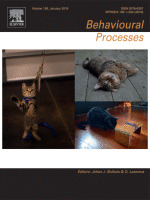
The effects of anthropogenic noise on feeding behaviour in black-capped chickadees (𝘗𝘰𝘦𝘤𝘪𝘭𝘦 𝘢𝘵𝘳𝘪𝘤𝘢𝘱𝘪𝘭𝘭𝘶𝘴)
Abstract
Anthropogenic noise has been shown to impact animal behaviour. Most studies investigating anthropogenic noise, and the detrimental effect it has on behaviour, have been conducted in the field, where a myriad of covariates can make interpretation challenging. In this experiment, we studied the effects of an approximation of anthropogenic noise, simulated with brown noise, on the feeding behaviour of wild-caught black-capped chickadees in a laboratory setting. We measured the amount of time spent eating while subjects heard either conspecific calls, brown noise, or a combination of calls and brown noise. We found that subjects fed more in the silence following playback than during the playback itself for all types of stimuli, suggesting that chickadees may shift their feeding behaviour to avoid feeding during periods of noise. The ability to adapt to changing environments (e.g., varying noise levels) may allow species to thrive in the presence of anthropogenic noise. Our findings outline a laboratory-based method that could be adopted and adapted to examine a variety avian species and of types anthropogenic noise.
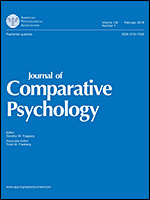
Hear them roar: A comparison of black-capped chickadee (𝘗𝘰𝘦𝘤𝘪𝘭𝘦 𝘢𝘵𝘳𝘪𝘤𝘢𝘱𝘪𝘭𝘭𝘶𝘴) and human (𝘏𝘰𝘮𝘰 𝘴𝘢𝘱𝘪𝘦𝘯𝘴) perception of arousal in vocalizations across all classes of terrestrial vertebrates
Abstract
Recently, evidence for acoustic universals in vocal communication was found by demonstrating that humans can identify levels of arousal in vocalizations produced by species across three biological classes (Filippi et al., 2017). Here, we extend this work by testing whether two vocal learning species, humans and chickadees, can discriminate vocalizations of high and low arousal using operant discrimination go/no-go tasks. Stimuli included vocalizations from nine species: giant panda, American alligator, common raven, hourglass treefrog, African elephant, Barbary macaque, domestic pig, black-capped chickadee, and human. Subjects were trained to respond to high or low arousal vocalizations, then tested with additional high and low arousal vocalizations produced by each species. Chickadees (Experiment 1) and humans (Experiment 2) learned to discriminate between high and low arousal stimuli and significantly transferred the discrimination to additional panda, human, and chickadee vocalizations. Finally, we conducted discriminant function analyses using four acoustic measures, finding evidence suggesting that fundamental frequency played a role in responding during the task. However, these analyses also suggest roles for other acoustic factors as well as familiarity. In sum, the results from these studies provide evidence that chickadees and humans are capable of perceiving arousal in vocalizations produced by multiple species. (PsycINFO Database Record (c) 2019 APA, all rights reserved).

Features of Male- and Female-Produced Song in Black-Capped Chickadees (𝘗𝘰𝘦𝘤𝘪𝘭𝘦 𝘢𝘵𝘳𝘪𝘤𝘢𝘱𝘪𝘭𝘭𝘶𝘴) Change Between Seasons
Abstract
Black-capped chickadees (Poecile atricapillus) are small, non-migratory songbirds that are commonly seen across much of North America. One of their primary vocalizations, the fee-bee song, has been well-documented in males and functions in both mate attraction and territory defense (Smith, 1991). Both of these functions are critical to fitness particularly in the spring during the breeding season, but less so during other times of the year. Use of this song by females has only recently been described and its function is not well understood (Hahn et al., 2013). In this experiment, we measured acoustic features related to frequency and duration of both male- and female-produced fee-bee songs that had been recorded at two times of the year (e.g., spring and fall). We found that male songs showed less variation overall in their acoustic measures than female songs across both seasons. We also found that songs produced in the spring had less overall variation than those produced in the fall, regardless of sex of the producer. This suggests that fee-bee songs are more critical in the spring than fall, and also suggests that male song consistency may be more important than female song consistency. More research into the use and function of female song may elucidate these sex differences.

ZENK expression following conspecific and heterospecific playback in the zebra finch auditory forebrain
Abstract
Zebra finches (Taeniopygia guttata) are sexually dimorphic songbirds, not only in appearance but also in vocal production: while males produce both calls and songs, females only produce calls. This dimorphism provides a means to contrast the auditory perception of vocalizations produced by songbird species of varying degrees of relatedness in a dimorphic species to that of a monomorphic species, species in which both males and females produce calls and songs (e.g., black-capped chickadees, Poecile atricapillus). In the current study, we examined neuronal expression after playback of acoustically similar hetero- and conspecific calls produced by species of differing phylogenetic relatedness to our subject species, zebra finch. We measured the immediate early gene (IEG) ZENK in two auditory areas of the forebrain (caudomedial mesopallium, CMM, and caudomedial nidopallium, NCM). We found no significant differences in ZENK expression in either male or female zebra finches regardless of playback condition. We also discuss comparisons between our results and the results of a previous study conducted by Avey et al. [1] on black-capped chickadees that used similar stimulus types. These results are consistent with the previous study which also found no significant differences in expression following playback of calls produced by various heterospecific species and conspecifics [1]. Our results suggest that, similar to black-capped chickadees, IEG expression in zebra finch CMM and NCM is tied to the acoustic similarity of vocalizations and not the phylogenetic relatedness of the species producing the vocalizations.

Introduction
Passerines include many songbirds, a group of more than 5,000 species that engage in vocal learning, similar to how humans, cetaceans, bats, elephants, parrots, and hummingbirds learn their vocalizations (Doupe and Kuhl 1999). Passerines, in general, are commonly referred to as songbirds, but this is not entirely correct. The order can instead be broken down into the Oscines and the Suboscines. Oscines (i.e., songbirds or “true” songbirds) have highly developed song and learn their species-typical vocalizations via a model (e.g., a parent) and have dedicated brain architecture. Suboscines, however, do not require a model to learn their species-typical vocalizations and continue to produce and perceive vocalizations even with damaged auditory brain regions; however, some species do have a rudimentary vocal system, the structure(s) within the brain associated with production of vocalizations, which appears to act in the same way as in the Oscines (Kroodsma and Konishi 1991). These structures include rudimentary forms of structures like the robust nucleus of the arcopallium, which could indicate an evolutionary predecessor to a true vocal control system (see more details below; Liu et al. 2013). In North America, there is only one family of Suboscines: Tyrannidae, which includes flycatchers, phoebes, and king birds. Passerines primarily communicate using vocalizations, as acoustic signals are difficult to localize (e.g., in the presence of a predator), can travel across greater distances than visual cues, and are advantageous in dense vegetation. Passerines include a wide range of species found in both temperate and tropical climates.
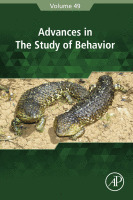
Mechanisms of Communication and Cognition in Chickadees: Explaining Nature in the Lab and Field
Introduction
In the modern study of animal behavior, there are broadly two main schools of investigation: behavioral ecology and comparative psychology. Behavioral ecology is the study of how ecological pressures have driven the evolution of behavior in animals, starting with Niko Tinbergen’s (1963) seminal “four questions.” Comparative psychology (and comparative cognition, terms which we use interchangeably: see McMillan & Sturdy, 2015) is the study of the convergent and divergent psychological mechanisms by which animals learn and solve problems, informed most powerfully by the work of B.F. Skinner (1938) but also taking liberally from many areas of psychology. While each of these fields are historically influenced and populated near exclusively by biologists (behavioral ecology) or psychologists (comparative psychology), these fields are interrelated and the goal of the present paper is to demonstrate how fruitful research combining these approaches can be. We will illustrate this by exhaustively summarizing a breadth of communication research in a single animal group, the blackheaded chickadee clade. Chickadees are an ideal model to examine acoustic communication, because chickadees exhibit complexity in the vocalizations they produce (for example, the types of vocalizations) and complexity in their social structure (territorial in the breeding season and group living in the nonbreeding season). In addition, chickadees learn both their calls and songs and exhibit vocal plasticity even into adulthood. Along with studying these behavioral and developmental processes in chickadees, we can also examine the underlying neural mechanisms associated with vocal learning and perception. By summarizing research conducted with blackcapped chickadees, we show how the integration of behavioral ecology and comparative psychology, along with techniques from neuroscience, acoustics, and computer science, gives a fuller picture of animal behavior than any single field of study possibly could. We begin with a brief overview of the natural history of black-capped chickadees, followed by a general discussion of chickadee acoustic communication. We next discuss the vocal production and perception by chickadees, with a major focus on bioacoustic, playback, and operant conditioning studies. We also discuss the role that development plays in vocal production and perception, and we end with a discussion of studies examining the neural correlates associated with vocal communication in this species.

Discrimination of acoustically similar conspecific and heterospecific vocalizations by black-capped chickadees (𝘗𝘰𝘦𝘤𝘪𝘭𝘦 𝘢𝘵𝘳𝘪𝘤𝘢𝘱𝘪𝘭𝘭𝘶𝘴)
Abstract
Chickadees produce a multi-note chick-a-dee call in multiple socially relevant contexts. One component of this call is the D note, which is a low-frequency and acoustically complex note with a harmonic-like structure. In the current study, we tested black-capped chickadees on a between-category operant discrimination task using vocalizations with acoustic structures similar to black-capped chickadee D notes, but produced by various songbird species, in order to examine the role that phylogenetic distance plays in acoustic perception of vocal signals. We assessed the extent to which discrimination performance was influenced by the phylogenetic relatedness among the species producing the vocalizations and by the phylogenetic relatedness between the subjects’ species (black-capped chickadees) and the vocalizers’ species. We also conducted a bioacoustic analysis and discriminant function analysis in order to examine the acoustic similarities among the discrimination stimuli. A previous study has shown that neural activation in black-capped chickadee auditory and perceptual brain regions is similar following the presentation of these vocalization categories. However, we found that chickadees had difficulty discriminating between forward and reversed black-capped chickadee D notes, a result that directly corresponded to the bioacoustic analysis indicating that these stimulus categories were acoustically similar. In addition, our results suggest that the discrimination between vocalizations produced by two parid species (chestnut-backed chickadees and tufted titmice) is perceptually difficult for black-capped chickadees, a finding that is likely in part because these vocalizations contain acoustic similarities. Overall, our results provide evidence that black-capped chickadees’ perceptual abilities are influenced by both phylogenetic relatedness and acoustic structure.

Chickadees discriminate contingency reversals presented consistently, but not frequently
Abstract
Chickadees are high-metabolism, non-migratory birds, and thus an especially interesting model for studying how animals follow patterns of food availability over time. Here, we studied whether black-capped chickadees (Poecile atricapillus) could learn to reverse their behavior and/or to anticipate changes in reinforcement when the reinforcer contingencies for each stimulus were not stably fixed in time. In Experiment 1, we examined the responses of chickadees on an auditory go/no-go task, with constant reversals in reinforcement contingencies every 120 trials across daily testing intervals. Chickadees did not produce above-chance discrimination; however, when trained with a procedure that only reversed after successful discrimination, chickadees were able to discriminate and reverse their behavior successfully. In Experiment 2, we examined the responses of chickadees when reversals were structured to occur at the same time once per day, and chickadees were again able to discriminate and reverse their behavior over time, though they showed no reliable evidence of reversal anticipation. The frequency of reversals throughout the day thus appears to be an important determinant for these animals’ performance in reversal procedures.

Moving from perceptual to functional categories in songbirds
Abstract
Category perception, as Herrnstein (1990) defined it, is a powerful and pervasive cognitive ability possessed by every species in which it has been adequately tested. We have studied category perception of vocal communication signals in songbirds for over 20 years. Our first studies provided us with an understanding of songbird vocal category production and perception, clarifying perceptual categorization and the underlying mechanisms. More recent work has moved towards understanding functional vocal categories such as sex, dominance, species, and geography. Some of our most recent work has moved into the realm of conceptual knowledge, with studies aimed at understanding birds’ ability to deal with concepts of sameness and danger (i.e., threat level). Here we provide key examples that effectively show the wide range of abilities possessed and used by songbirds.
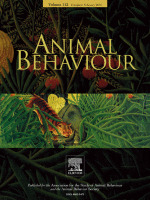
Black-capped chickadees categorize songs based on features that vary geographically
Abstract
The songs of many songbird species vary geographically, yet, the songs of black-capped chickadees, Poecile atricapillus, show remarkable consistency across most of the species’ North American range. Previous research has described subtle variations in the song of this species by comparing songs produced by males at distant parts of the species’ range (British Columbia and Ontario). In the current study, we used an operant discrimination task to examine whether birds classify the songs produced by males in these two previously studied locations as belonging to distinct open-ended categories. In both experiments, when birds were presented with new songs, they continued to respond to songs from the same geographical location as the songs that were reinforced during initial discrimination training, suggesting that birds were using open-ended categorization. We also presented birds with songs in which we manipulated acoustic features in order to examine the acoustic mechanisms used during discrimination; results provide support that birds use the duration of the song when discriminating, but the results also suggest that birds used additional acoustic features. Taken together, these experiments show that black-capped chickadees classify songs into open-ended, geography-based categories, and provide compelling evidence that perceptible acoustic differences exist in a vocalization that is seemingly consistent across the species’ range.

An investigation of sex differences in acoustic features in black-capped chickadee (𝘗𝘰𝘦𝘤𝘪𝘭𝘦 𝘢𝘵𝘳𝘪𝘤𝘢𝘱𝘪𝘭𝘭𝘶𝘴) chick-a-dee calls
Abstract
Sex differences have been identified in a number of black-capped chickadee vocalizations and in the chick-a-dee calls of other chickadee species [i.e., Carolina chickadees (Poecile carolinensis)]. In the current study, 12 acoustic features in black-capped chickadee chick-a-dee calls were investigated, including both frequency and duration measurements. Using permuted discriminant function analyses, these features were examined to determine if any features could be used to identify the sex of the caller. Only one note type (A notes) classified male and female calls at levels approaching significance. In particular, a permuted discriminant function analysis revealed that the start frequency of A notes best allowed for categorization between the sexes compared to any other acoustic parameter. This finding is consistent with previous research on Carolina chickadee chick-a-dee calls that found that the starting frequency differed between male- and female-produced A notes [Freeberg, Lucas, and Clucas (2003). J. Acoust. Soc. Am. 113, 2127–2136]. Taken together, these results and the results of studies with other chickadee species suggest that sex differences likely exist in the chick-a-dee call, specifically acoustic features in A notes, but that more complex features than those addressed here may be associated with the sex of the caller.

Biological salience influences performance and acoustic mechanisms for the discrimination of male and female songs
Abstract
In temperate songbirds, song is traditionally considered a reproductive and territorial signal produced by males. Previous research has described the production of male and female songs by black-capped chickadees, Poecile atricapillus, a temperate songbird species. Statistical classification revealed that the frequency decrease in the first note of the song is a potential acoustic mechanism that would allow birds to distinguish between the sexes. Here we used an operant discrimination task to examine whether this statistical difference in song is an acoustic difference that is perceived by black-capped chickadees in a manner that would allow birds to quickly assess the sex of a singing conspecific. To better understand the underlying perceptual mechanisms for this sex-based discrimination, we also presented birds with untrained, manipulated songs. In experiments 1 and 2, we tested black-capped chickadees using a true category/pseudo category task. Birds in a true category group performed similarly to birds in a pseudo category group, suggesting that there is no advantage in discrimination abilities for birds using categorization (i.e. true category group) over rote memorization (i.e. pseudo category group), possibly because the heightened biological salience of the song influenced the performance of the chickadees. However, responses to untrained songs suggest that birds learned a sex-based category rule when discriminating among songs. In experiment 3, we trained artificial neural networks (ANNs) using an analogous task in order to examine responding in the absence of experiential or biological factors. Results from ANNs suggest that male and female songs are acoustically distinct and can be discriminated using categorization, and that acoustic features within the fee note are an important acoustic mechanism for this sex-based discrimination. Overall, the results suggest that the biological salience of the songs affected the birds’ responses.
